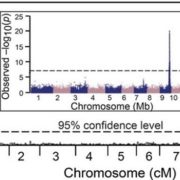
Chemical Defenses of Maize Roots
Blog, Plant Physiology, Plant Physiology: On The Inside, Research, Research BlogOf the many classes of natural products produced by plants, terpenoids are the most structurally diverse, with well over 25,000 established compounds. In maize (Zea mays), terpene olefins are nearly ubiquitous components of induced volatile emissions following biotic stress. In contrast to our understanding…

New Insights into Wound-Induced Callus Formation
Blog, Plant Physiology, Plant Physiology: On The Inside, Research, Research BlogPlants repair wound sites through the formation of unorganized cell masses called calli, which can also serve as progenitors of new organs. Callus formation and organ regeneration often entail cell cycle re-entry of quiescent cells, which is achieved through the re-activation of core cell cycle regulators…

Lignin Bioengineering in Poplar
Blog, Plant Physiology, Plant Physiology: On The Inside, Research, Research BlogLignified cell walls constitute an important renewable and sustainable feedstock for the production of fermentable sugars, biochemicals, and biomaterials. In biorefineries, plant cell wall polysaccharides are depolymerized into simple monomeric sugars, a process called saccharification. These sugars…
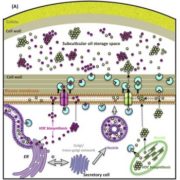
Review: Accumulation of plant volatile organic compounds
Blog, Plant Science Research Weekly, Research, Research BlogPlant glandular trichomes can store and secrete great amounts of volatile organic compounds (VOCs) that are important for a variety of processes, from development to interacting with herbivores. VOCs accumulate in specific extracellular spaces which can be subcuticular or intercellular. The active transport…
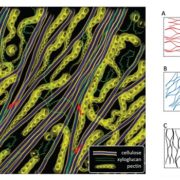
Review: Diffuse growth of plant cell walls
Blog, Plant Science Research Weekly, Research, Research BlogIn order for a cell to expand, its volume needs to increase and the cell wall needs to loosen up. There are multiple processes resulting in cell wall loosening, but not all of them result in extension. Cosgrove differentiates different structural, mechanical and physiocochemical processes that lead to…

Review: Plant systems biology at the single-cell level
Blog, Plant Science Research Weekly, Research, Research BlogThe establishment and enormous developments in -omics and systems biology over the last years have increased our understanding and ability to analyze complex biological processes at entire plant, organ or tissue levels. However, these arrays of datasets have the limitation of cellular complexity in terms…

Regulatory small RNAs responsible for natural variation in snapdragon flower color patterning ($)
Blog, Plant Science Research Weekly, Research, Research BlogFlower color pattern is a major trait influencing pollinator attraction, but underlying regulatory mechanisms are still poorly understood. Using co-existing Snapdragon subspecies displaying different flower pigmentation motifs, Bradley et al. investigated the molecular basis of flower color patterning.…
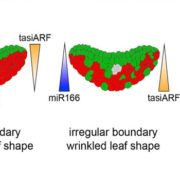
Boundary formation through direct threshold-based readout of mobile small RNA gradients
Blog, Plant Science Research Weekly, Research, Research BlogHow does a flat leaf form? Previous studies have indicated that the formation of a flattened blade depends upon a boundary layer between the upper and lower cell layers, and that mobile small RNAs contribute to this boundary, but how this occurs is not fully resolved. For example, although the small…
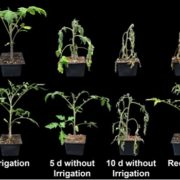
The tomato DELLA protein PROCERA acts in guard cells to promote stomatal closure
Blog, Plant Science Research Weekly, Research, Research Blog, The Plant CellNuclear accumulation of DELLA proteins induces transcriptional reprogramming and is well known to suppress the gibberellin (GA) pathway. While DELLAs can negatively regulate GA, increased GA levels can also signal DELLA degradation. GA is a growth-regulating hormone that is also involved in inhibiting…

